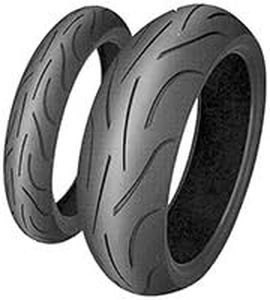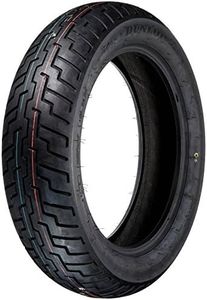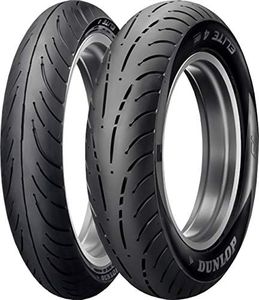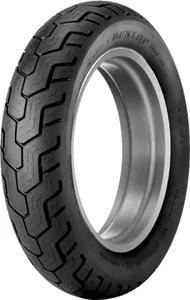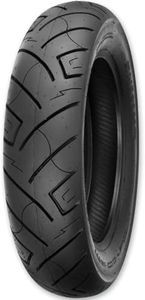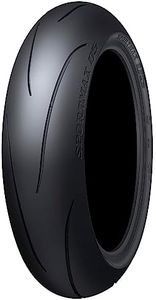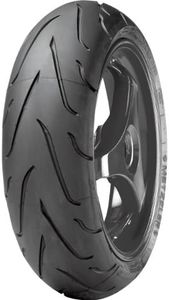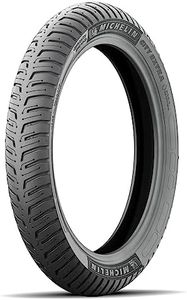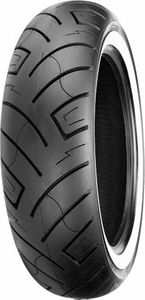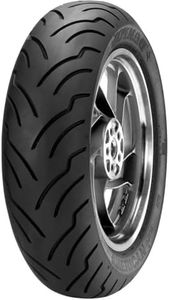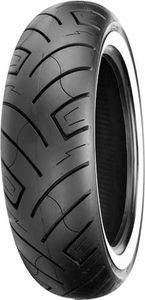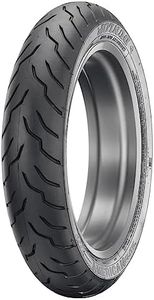We Use CookiesWe use cookies to enhance the security, performance,
functionality and for analytical and promotional activities. By continuing to browse this site you
are agreeing to our privacy policy
10 Best Motorcycle Tires
From leading brands and best sellers available on the web.Buying Guide for the Best Motorcycle Tires
Choosing the right motorcycle tires is essential for your safety, comfort, and riding performance. Tires are the only part of your bike that touches the road, so picking ones that fit your riding style and environment will make a big difference. When looking for a new set, think about where and how you usually ride, and look at different tire features to find the best fit for you.Tire TypeTire type refers to the intended use of the tire, such as touring, sport, cruiser, off-road, or dual-sport. This is important because each type is designed with different rubber compounds and tread patterns for specific conditions. For example, touring tires are made for long distances on highways, focusing on comfort and durability, while sport tires offer more grip for aggressive riding and sharper handling. Off-road tires, on the other hand, have deeper treads for better traction on dirt or gravel. To pick the right one, think about the surfaces you’ll ride on most often: stick to road-focused tires if you ride mainly on pavement, or go for dual-sport or off-road tires if you mix in unpaved trails.
Tread PatternThe tread pattern is the design of grooves and channels on a tire’s surface. This affects how the tire grips the road, handles water, and deals with different terrains. Slick or minimal tread gives more rubber contact with the road – great for dry conditions and sporty handling, but not ideal in the wet. Heavily grooved patterns push water away to avoid slipping on wet roads and provide better grip off-road. When choosing, consider your local weather: if you ride mostly in dry conditions, less aggressive treads work well, but for consistent wet roads or occasional trails, look for tires with deeper grooves.
Tire SizeTire size is measured by width, aspect ratio (height to width), and rim diameter, typically written as three numbers on the tire's sidewall. This is a fundamental spec because using the wrong size can affect bike handling and safety. Wider tires may offer more grip but could slow down steering, while narrower ones might make the bike feel lighter but reduce stability. Always check your motorcycle manufacturer’s recommendations, then consider if you want slightly different behavior (like more stability or sharper turns) by adjusting the width or profile in small amounts.
Load and Speed RatingsLoad and speed ratings tell you the maximum weight and speed a tire can safely carry. The load rating is a number representing how much weight each tire can support, while the speed rating is a letter for the highest safe speed. This matters for safety, especially if you ride with a passenger or luggage regularly or travel at highway speeds. Make sure to choose tires whose ratings meet or exceed your bike’s requirements—higher isn’t always better, but never go below your needs.
Construction (Bias Ply vs Radial)Tire construction refers to the way layers are arranged inside the tire. Bias ply tires have layers that crisscross over each other, which makes them tough and good for handling rough or heavy bikes. Radial tires have layers that go straight across with additional layers for strength, offering better grip and heat resistance, making them more common for modern, performance-oriented motorcycles. Think about your riding: radials are great for sport bikes and aggressive riders, while bias ply can work well for cruisers or touring bikes.
Rubber CompoundRubber compound is the specific mixture used in a tire, affecting how hard or soft it feels. Softer compounds give more grip (great for sportier riding or racing) but wear out faster, while harder compounds last longer and are better for general commuting or touring. Some tires are 'dual compound'—softer on the edges for cornering, harder in the center for straight-line mileage. Match the compound to your needs: frequent riders or commuters might prefer harder compounds, while weekend riders looking for twisty fun could opt for softer or mixed-compound tires.
